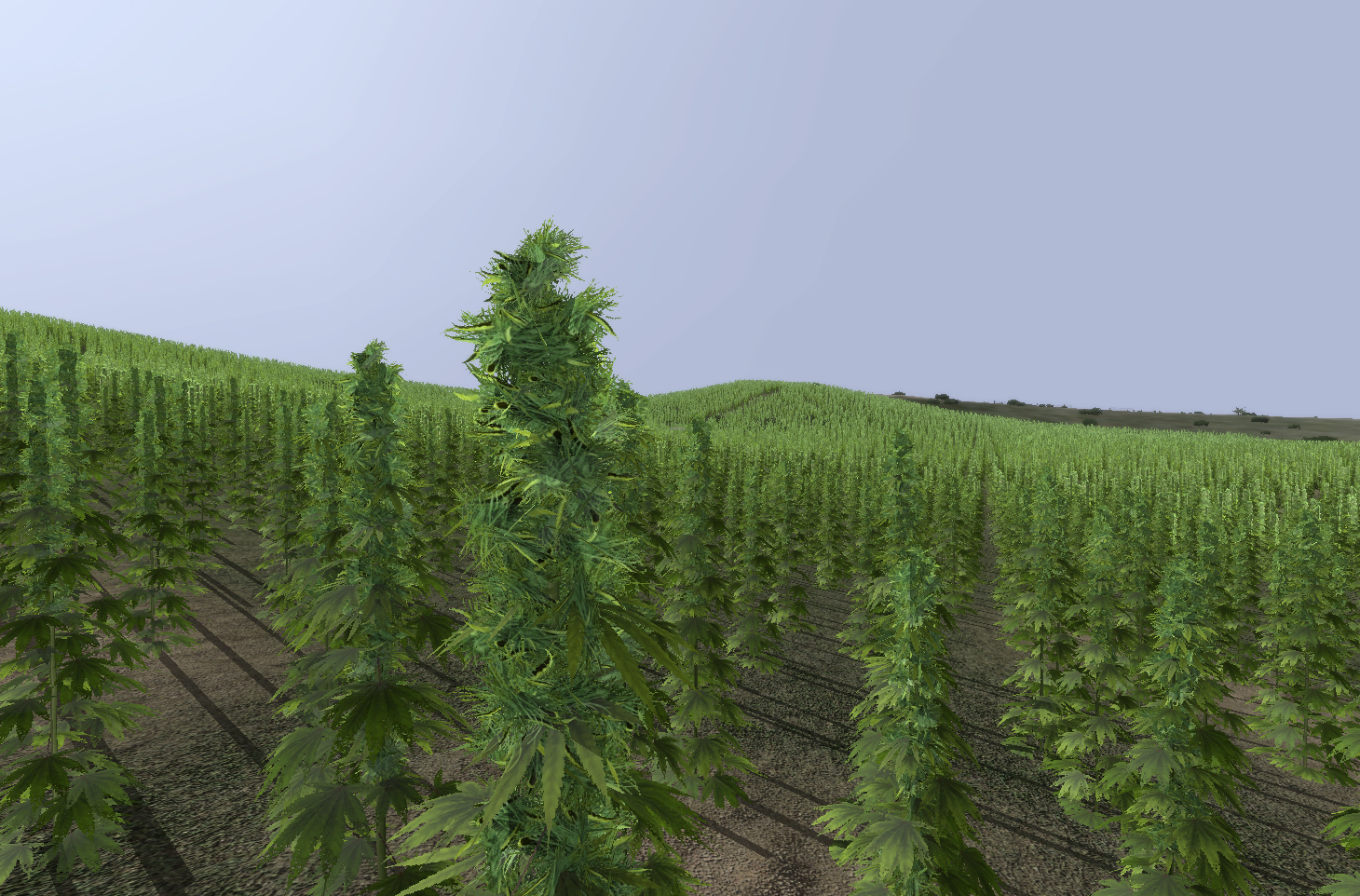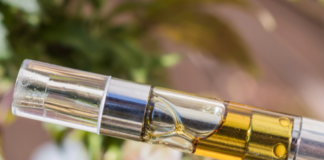California’s biggest licensed cannabis grower isn’t located in the Emerald Triangle, the state’s world-renowned farming region. Nor are they in the Coachella Valley, where massive indoor farms have popped up over the past year.
Central Coast Agriculture, California’s single-largest licensed cannabis cultivator, is located in Santa Barbara County. Yes, snooty Santa Barbara.
With its luxury coastal mansions, historic Spanish missions, and reputation as an enclave of the cultured, moneyed elite—Santa Barbara County is, surprisingly, emerging as a cannabis farming stronghold in California’s legal-and-licensed era.
To be clear, Northern California’s Humboldt County, with its thousands of secluded farms, produces far more cannabis than Santa Barbara by tonnage. But Humboldt actually ranks second in number of licenses issued. As a result, Santa Barbara, with its burgeoning cultivation and easy freeway access to the Southern California consumer market, may be positioned to become California’s largest legal cannabis producer.
California’s single largest licensed grower isn’t in the Emerald Triangle. He’s in Santa Barbara County. His name is John de Friel.
This Central Coast county, which ranks 13th among California’s 58 counties in agricultural output, is number one in issuing commercial permits for cannabis cultivation. Through October, Santa Barbara County had granted 1,437 cultivation licenses to 96 operators, with allowable cultivation totaling 345 acres. So far, county officials say, 196 acres are in production—including 150 acres of outdoor farming and 46 in mixed-light greenhouses.
John de Friel, the 32-year-old founder of Central Coast Agriculture, which grows cannabis on land previously used to raise organic vegetables and fruits, says his Santa Barbara County operation “represents the pinnacle of modern agriculture.”
Cannabis Flower Replaces Floral Blooms
 Cannabis farmer Autumn Shelton stands amid her thriving grow in Carpinteria, CA. Shelton, a partner in Autumn Brands, works with a former flower grower who recently converted four acres of cut-flower greenhouses to cannabis. (Peter Hecht for Leafly)
Cannabis farmer Autumn Shelton stands amid her thriving grow in Carpinteria, CA. Shelton, a partner in Autumn Brands, works with a former flower grower who recently converted four acres of cut-flower greenhouses to cannabis. (Peter Hecht for Leafly)
‘Mr. Cannabis’ in This County
If Santa Barbara’s 2018 farming boom had a single standard bearer, it would be De Friel.
 Farmer John de Friel
Farmer John de Friel
Four years ago De Friel, now 32, was a Ph.D. candidate in bioengineering at UC San Diego. In 2014, he answered the call of opportunity.
He quit his studies and formed a medical marijuana collective in the picturesque wine country near Santa Barbara—the lush, rolling viniculture landscape famously captured in the movie Sideways. Today, De Friel’s Central Coast Agriculture employs 75 full-time workers and 30 seasonal workers on neighboring 18- and 4-acre farms near Buellton.
Why did cannabis rise here? The political climate can claim at least part of the credit.
Four years ago John de Friel was a grad student studying bioengineering. Now he’s one of the state’s leading cannabis farmers.
Supervisors in the county of 450,000 residents last year approved cultivation rules with no acreage caps or license limits for individual farms. Earlier this summer, 75% of voters approved Measure T, which authorized a 4% gross receipts tax on commercial farming. Meanwhile, local and state rules have allowed Central Coast Agriculture to amass 89 “small cultivation” permits—for a total of 890,000 square feet, or 20.4 acres of cultivation. He is the single biggest producer in California’s cultivation landscape, and the first cannabis farmer to be appointed to a California county board or commission.
“My thought process was in developing cannabis as agricultural crop, and it only made sense to do it on a large scale,” said De Friel.
Big Cannabis Is Still Small
Central Coast Agriculture’s 22 acres remain puny compared to the average non-cannabis farm in Santa Barbara County. Here, strawberry fields, vineyards, cattle ranches, and other properties average 440 acres.
But those 22 acres offer a big-ag feel. Mechanized harvesters strip cannabis leaves and flowers from stalks. They are hauled to a giant conveyor belt, which feeds mounds of plant material into a cryogenics processor that flash-freezes the cannabis at -120 degrees.
The packaged product, vacuum-sealed and loaded into refrigerated trucks, is shipped to manufacturers that process the farm’s Raw Garden concentrates, sold in nearly 380 California dispensaries.
 Harvest time at Gypsy Canyon Farms near Lompoc, CA. Gypsy Canyon produces cannabis alongside 20 acres of pinot noir grapes. (Peter Hecht for Leafly)
Harvest time at Gypsy Canyon Farms near Lompoc, CA. Gypsy Canyon produces cannabis alongside 20 acres of pinot noir grapes. (Peter Hecht for Leafly)
Cannabis Funding 22 County Jobs
Santa Barbara County Supervisor Das Williams, a former Democratic state Assemblyman, didn’t support Proposition 64. But, after it passed, he backed creation of a locally governed cannabis sector. Among the beneficiaries were once-thriving floral greenhouses in the coastal community of Carpinteria.
This year’s county cannabis tax revenue is expected to be $8 to $14 million.
Santa Barbara allows cannabis cultivation inland, but has banned it along most of the county’s 110-mile coastal zone. Williams helped carve out an exemption to allow up to 186 acres of mixed-light cannabis production in Carpinteria. There, competition from the international flower market—namely cheap imports from Colombia—decimated greenhouses that for decades had grown lilies, Gerbera daisies, tulips, and irises. Now those greenhouses are blooming again with cannabis.
“The reason we’re pursuing these policies is that it is easier to have enforcement in communities where you’re permitting marijuana than where you’re not,” Williams told me. “You can stick your head in the sand and pretend you can ban it—or you can permit it and try to create a system that works.”
With the first county tax payments coming in under Measure T, Williams says this year’s fiscal year revenue will exceed projections. “We were looking at $8 million to $14 million and my sense is that it will come in at the high end,” he said.
The county has budgeted $5.8 million in cannabis money for its 2018–19 fiscal year. Some $3.5 million in cannabis taxes and permit fees are funding 22 positions in law enforcement and the county’s agriculture and planning departments.
No Hard Cap on Grow Size
In a county where 61.5% of voters approved Proposition 64 (four percentage points higher that the statewide margin), supervisors have notably decided to let the cannabis market determine the size of licensed farms. While Central Coast Agriculture is already at capacity, most other cannabis growers have fewer acres under cultivation than their permits allow.
“Our folks are farmers here,” said Deputy County Executive Officer Dennis Bozanich, who oversees the cannabis compliance program. “They’re used to being market savvy. If they don’t think the production price is going to come in, they’re not going to plant it. You’ve got to be really sure.”
Wine Grapes and Cannabis Flower
Robert Haugan is one of the major cannabis producer in Santa Barbara County—and he still isn’t quite sure how he ended up in that position.
Haugan, 54, is a business litigation attorney in Orange County. Years ago, he bought 160 acres in the Santa Rita Hills near the Santa Barbara County community of Lompoc. He hoped to preserve the property as “mitigation bank,” earning fees from land developers who offset the impacts of their projects by paying into a fund to protect open space and natural habitat. But that plan fell through.
Next door to Haugan’s property, a neighbor was already growing cannabis. So Haugan decided to develop the existing vineyards on his property and add a cannabis crop of his own. He now has a $2 million investment in the venture—Gypsy Canyon Farms—which produces 20 acres of pinot noir grapes and is permitted for 11½ acres of cannabis. He has about half of that acreage in production.
 Robert Haugan drives a four-wheeler between his cannabis groves and wine grapes. An Orange County attorney, Haugan turned a land-bank investment in the Santa Ynez Valley into a major cannabis farm. (Peter Hecht for Leafly)
Robert Haugan drives a four-wheeler between his cannabis groves and wine grapes. An Orange County attorney, Haugan turned a land-bank investment in the Santa Ynez Valley into a major cannabis farm. (Peter Hecht for Leafly)
Haugan, who employs five full-time and 20 seasonal workers, hired a farm supervisor skilled with both wine grapes and cannabis flower. He sells grapes to wine producers and cannabis, in bulk, to concentrate manufacturers. As a newcomer to the field, he doesn’t anticipate producing flower that will glisten on the top shelf of California dispensaries. Haugen knows he’d be going up against “people who have been growing cannabis for 20, 30, 40 years.”
“I love this,” he tells me, “but I don’t have delusions of grandeur.”
Location, Location, Location
One of the major attractions of Santa Barbara County is simply its geographic location.
“We’re halfway between Los Angeles and San Francisco,” which is a great place to grow cannabis, Haugan says. “There are no limits on canopy size here, and we have a huge availability of agricultural workers. All the elements are there for Santa Barbara to produce a ton of cannabis.”
“In reputation, Santa Barbara has a long way to go before we are mentioned in the same breath as Humboldt. But then again, you don’t have to drive 40 miles down a dirt road and then turn right at a gnarled tree to get to a farm.”
Santa Barbara’s cannabis farms, along with expansive growing operations in Monterey County’s Salinas Valley, have unnerved some cannabis advocates who worry the expanding operations may threaten the small farms and niche growers who have historically produced some of California’s finest cannabis.
Threat to Craft Growers?
In January, the California Growers Association, a leading advocacy group for cannabis farmers, sued the California Department of Food and Agriculture over a state rule allowing producers to compile multiple cultivation licenses in cannabis mega-farms. The organization said allowing farms larger than four acres violated Proposition’s 64 pledge to forge a legal cannabis industry “around small and medium sized businesses by prohibiting large-scale cultivation licenses for the first five years.”
Autumn Shelton, cannabis farm co-owner
The lawsuit, which is still pending, reflected fears of craft cannabis growers in Humboldt and Mendocino that their niche flowers could lose out to the Budweisers of bud. But Santa Barbara County farms largely produce bulk-grade plant material that’s processed into concentrate for vape pens or cannabis concentrates.
Hezekiah Allen, the Growers Association’s executive director, says Santa Barbara growers may achieve regional appeal with “farmers’ reserve cuts” included in California dispensary flower selections. He said Humboldt growers, with “a world-renowned cannabis brand,” generally needn’t worry about Santa Barbara. But he added: “Folks in Humboldt who refuse to write a business plan should be terrified.”
Look for the Santa Barbara Label
Autumn Shelton, a business partner and the marketing face of Autumn Brands, a Carpinteria cannabis producer, hopes Santa Barbara’s newest commercial product will someday hold the same mystique as its Central Coast wine grapes.
Shelton, 38, a former real estate broker, has partnered with a traditional flower grower who has converted four acres of greenhouses to cannabis. Autumn Brands employs 75 people in eight licensed cultivation rooms, a plant nursery, and a packaging facility. The company is producing cannabis pre-rolls and buds sold in 100 dispensaries.
“The flower industry wasn’t profitable anymore, and the growers needed to switch to a new agricultural product,” Shelton says. “And I think the county saw the promise. They spoke with the community. They spoke with the growers. The learned about this plant—and its benefits and opportunities.”
Her aspirations are high.
“We’re going to have a cannabis appellation in Santa Barbara County,” she adds. “It’s changing every day. And, someday soon, trying cannabis from different regions of California will become very important.”













